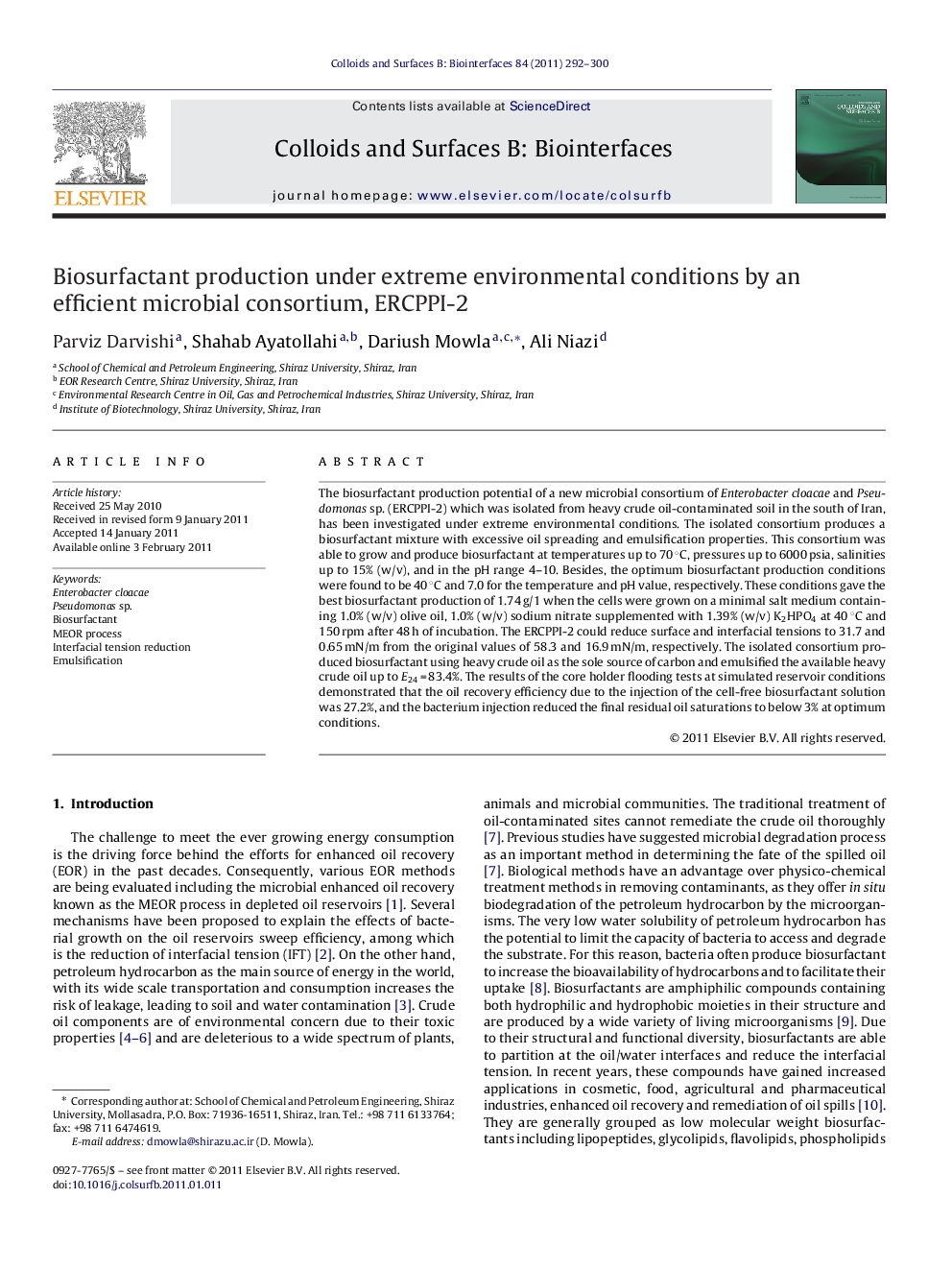| Article ID | Journal | Published Year | Pages | File Type |
|---|---|---|---|---|
| 601130 | Colloids and Surfaces B: Biointerfaces | 2011 | 9 Pages |
The biosurfactant production potential of a new microbial consortium of Enterobacter cloacae and Pseudomonas sp. (ERCPPI-2) which was isolated from heavy crude oil-contaminated soil in the south of Iran, has been investigated under extreme environmental conditions. The isolated consortium produces a biosurfactant mixture with excessive oil spreading and emulsification properties. This consortium was able to grow and produce biosurfactant at temperatures up to 70 °C, pressures up to 6000 psia, salinities up to 15% (w/v), and in the pH range 4–10. Besides, the optimum biosurfactant production conditions were found to be 40 °C and 7.0 for the temperature and pH value, respectively. These conditions gave the best biosurfactant production of 1.74 g/1 when the cells were grown on a minimal salt medium containing 1.0% (w/v) olive oil, 1.0% (w/v) sodium nitrate supplemented with 1.39% (w/v) K2HPO4 at 40 °C and 150 rpm after 48 h of incubation. The ERCPPI-2 could reduce surface and interfacial tensions to 31.7 and 0.65 mN/m from the original values of 58.3 and 16.9 mN/m, respectively. The isolated consortium produced biosurfactant using heavy crude oil as the sole source of carbon and emulsified the available heavy crude oil up to E24 = 83.4%. The results of the core holder flooding tests at simulated reservoir conditions demonstrated that the oil recovery efficiency due to the injection of the cell-free biosurfactant solution was 27.2%, and the bacterium injection reduced the final residual oil saturations to below 3% at optimum conditions.
Graphical abstractFigure optionsDownload full-size imageDownload as PowerPoint slideResearch highlights► A new microbial consortium of Enterobacter cloacae and Pseudomonas sp. was isolated. ► The consortium produces a biosurfactant mixture at extreme environmental conditions. ► The optimum temperature and pH value for biosurfactant production were 40 °C and 7.0. ► The consortium has potential to degrade heavy crude oil under extreme conditions. ► Injection of the consortium as an MEOR agent increases the oil recovery efficiency.
